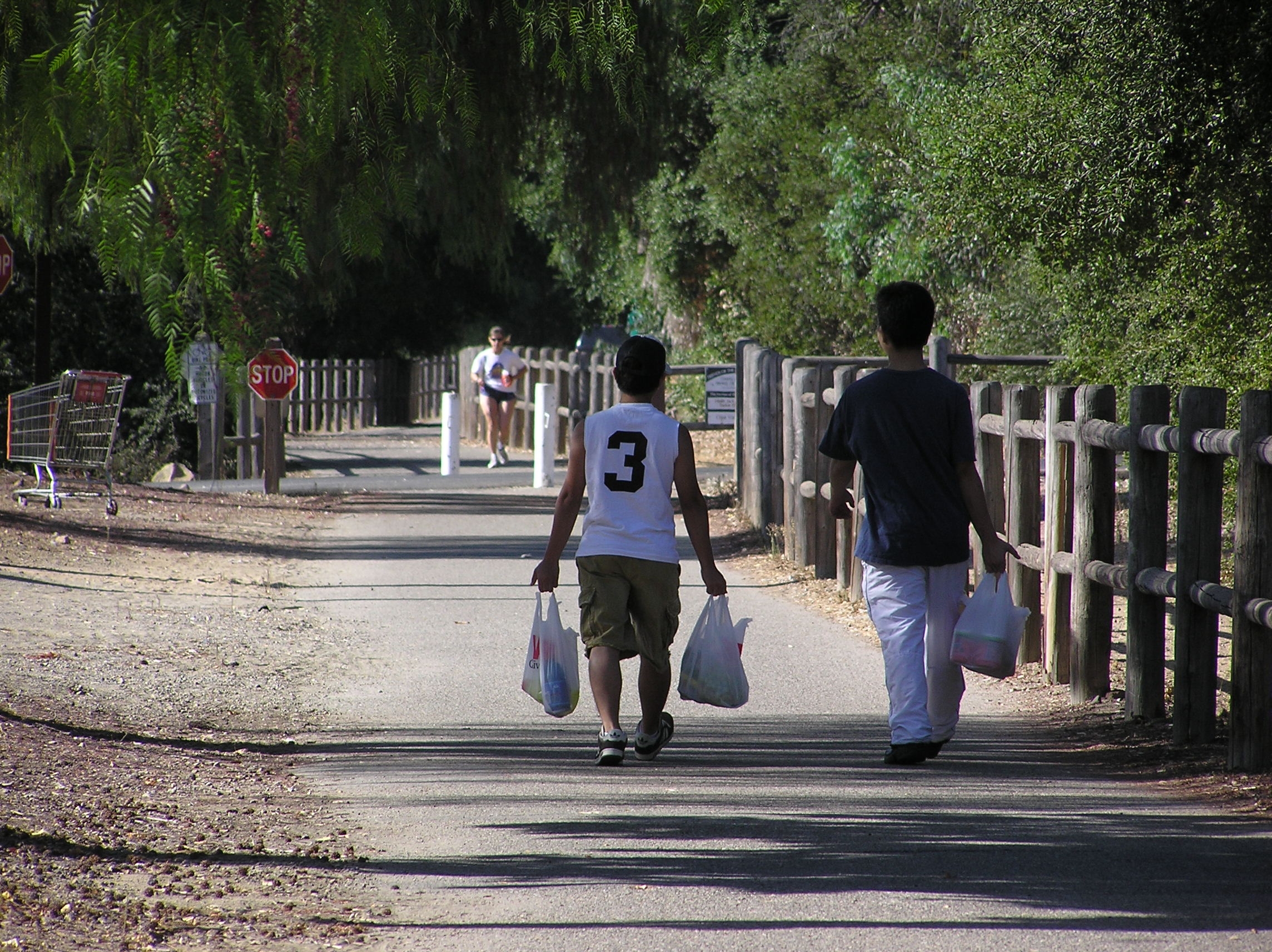This blog post has been contributed by Rails-to-Trails Conservancy
To health professionals, planners and transportation experts, active transportation (i.e. walking and biking as an alternative to car travel) is a no-brainer. Communities that facilitate non-motorized modes as safe and convenient options for getting from A to B simply function better. They have less pollution, their population is healthier, downtown business areas are more vibrant, and real estate values are stronger as their neighborhoods reflect what more Americans are demanding of their environments these days – diversity of transportation choices.
Not only that, but these facilities make economic sense too. A mile of paved trail can cost the same as just a few yards of urban four-lane road, not to mention the associated savings of non-motorized transportation stemming from reduced oil consumption and spending on reactive health care. This is why building environments that encourage walking and bicycling is a key part of the National Physical Activity Plan, and a major component of its strategies.

Unfortunately, despite the overwhelming support of the public health community, local planners and officials, businesspeople and residents, there are still some political and financial barriers to building these kinds of environments. For example, the Transportation Enhancements (TE) program was recently an agenda item during government budget planning. TE is the nation’s largest funding source for trails, walking and bicycling. Working with numerous partners, Rails-to-Trails Conservancy (RTC) led an effort to ensure our elected leaders knew how important walking and biking options were to their constituents. In the end, vital active transportation programs like TE were preserved intact.
RTC knows it is important to secure adequate funding for active transportation into the future. So, what we know to be a public health issue – the effort to increase physical activity in our everyday lives – is also an effort of political will.
In an era of fiscal constraint, presenting economic benefits could have the most weight when discussing the issue with policymakers. With walking and biking, it is an easy argument to make.

Biking and walking infrastructure account for less than two percent of the entire federal surface transportation budget, yet account for 12 percent of all trips taken in America. And trail construction projects have been shown to create more jobs, and more local jobs, for every $1 spent, than road construction. This is both smart financial investment and good health policy.
The voice of the health community, which understands so clearly that investing in walking and biking could translate into a significant reduction in our health care expenditure, adds yet another dimension to a case that is already hard to dismiss.
The great work being done through the National Physical Activity Plan will only be realized as health gains if we are able to maintain funding and support for facilities that encourage biking, walking, and active ways of getting around.
How will you encourage the funding of facilities that promote active transportation?
Pictured: Community trails like the Hudson River Greenway (top image) in New York and the Ojai Valley Trail in California are crucial in providing transportation options for residents that incorporate health and fitness into their daily lives.
Want to know more about how RTC is working to build a better landscape for walking and biking? Contact Kartik Sribarra at kartik@railstotrails.org.